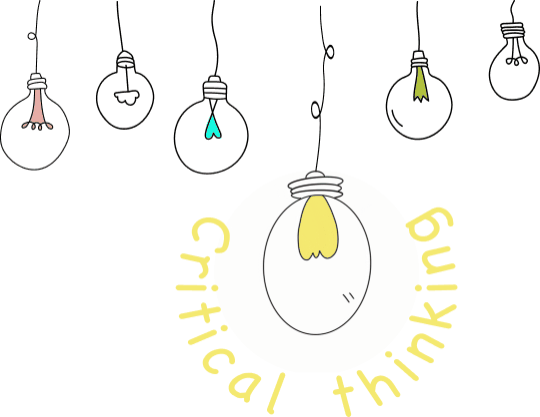The purpose of critical design thinking
What is the real purpose of this kind of thinking and why should we use it in the design process?
Design thinking seems to be a universal tool that can be used to solve almost any design problem. Moreover, critical design thinking is the process of generating ideas using a critical thinking approach.
During this process, the critical debate brings out people’s values and perspectives that will help to develop an effective, competitive, or even unique product in the world market.

In essence, a deep understanding of complex problems that are not visible on the surface or are simply hidden from view. In addition to the obvious pain points of the regular users, this way of thinking allows designers to implement a complex understanding of all insights collected from a wider range of components, such as ethnic, religious, political, economic, and social data facts.

Deep analysis of the problem
Possessing such invaluable information and in-depth analysis of the problem allows you to create a product that can be crucial to society. Such a creation became the starting point for the development of all mankind.
To give a few instances, Henry Ford revolutionized the world with his solution of mass production with its conveyor assembly line, by doing that he made it possible to reduce the cost of vehicle production and it became more affordable to purchase. More than 100 years later, we’re now using conveyors in mechanical engineering as the main production method. Even though nowadays technology has improved speed and accuracy since then, Ford could not even dream of the wide use of his invention and how it became crucial.
Another example is about a life-saving invention, “In 1959, the Volvo engineer Nils Bohlin developed the modern three-point seat belt. Although the design was patented, the company decided the patent was to be left open, making it available to all vehicle manufacturers to use for free” (Copyright AB Volvo 2022) We even don’t know how many lives this invention saved in the past and will save in the future, its proven effectiveness around the globe became a game changer for safety. Of course, a magnificent impact was caused by the fact that the company made it free to use for everyone, which significantly accelerated its introduction to the market. As a result, more saved lives.
Certainly, how can I skip the third example? It is Steve Jobs and his revolutionary magical creation the iPhone – touch screen mobile phone with all sorts of functions such as video calls, emailing, photographing, etc. On January 2007 he introduced the device to the world in front of 4000 people: “Every once in a while, a revolutionary product comes along that changes everything and Apple has been – well, first of all, one’s very fortunate if you get to work on just one of these in your career. Apple has been very fortunate. It’s been able to introduce a few of these into the world” (Copyright © 2022 The Singju Post). Truly, it was a revolutionary breakthrough in technology. iPhone ushered in a new era for smartphones, establishing most of the features and useful design decisions that are still in use today. For example, a touch screen instead the outdated numeric keypad came in handy in a wider range of applications. Useful, so much larger with providing a clear picture. Also, iPhone App Store launched a huge mobile app industry that helps people in their daily home or office routines and could be lifesaving. Some air alarm apps will loudly announce the missile alert, chemical, and radiation dangers, weather alarms, danger alarms or various variations of medical applications, etc. It is possible to endlessly enumerate all the advantages this invention brought, but it is a real fact that it has become a game-changing device.
All these creations became the starting point for the development of crucial life-changing products because of radical critical thinking that supports healthy living conditions.

Conclusion
A lack of critical design thinking can undermine the ability of designers and their stakeholders to use deep design thinking to influence design methodology that serves to create a meaningful product that will not only stand out from others but also make a significant contribution to society.
References
- “In 1959, the Volvo engineer Nils Bohlin developed the modern three-point seat belt. Although the design was patented, the company decided the patent was to be left open, making it available to all vehicle manufacturers to use for free”, Copyright AB Volvo 2022, The three-point seat belt – an innovation that saved over 1 million lives (2019, July 15)
Retrieved from https://www.volvobuses.com/en/news/2019/jul/the-three-point-seat-belt-an-innovation-that-saved-over-1-million-lives.html#:~:text=In%201959%2C%20the%20Volvo%20engineer,manufacturers%20to%20use%20for%20free - “Every once in a while, a revolutionary product comes along that changes everything and Apple has been – well, first of all, one’s very fortunate if you get to work on just one of these in your career. Apple has been very fortunate. It’s been able to introduce a few of these into the world”. Copyright © 2022 The Singju Post. Steve Jobs iPhone 2007 Presentation (Full Transcript), (2014, July 4)
Retrieved from https://singjupost.com/steve-jobs-iphone-2007-presentation-full-transcript/#:~:text=Steve%20Jobs%2D%20Apple%20CEO&text=Every%20once%20in%20a%20while,of%20these%20into%20the%20world
